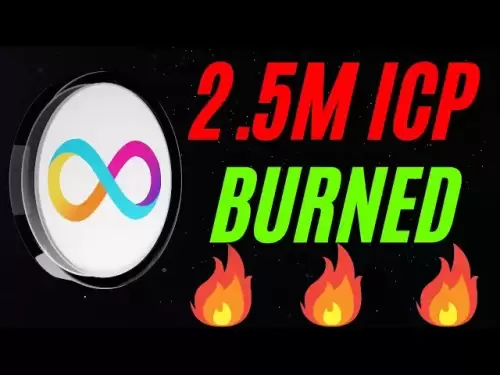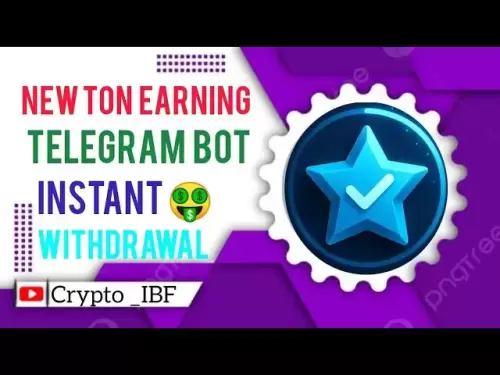-
 Bitcoin
Bitcoin $106,754.6083
1.33% -
 Ethereum
Ethereum $2,625.8249
3.80% -
 Tether USDt
Tether USDt $1.0001
-0.03% -
 XRP
XRP $2.1891
1.67% -
 BNB
BNB $654.5220
0.66% -
 Solana
Solana $156.9428
7.28% -
 USDC
USDC $0.9998
0.00% -
 Dogecoin
Dogecoin $0.1780
1.14% -
 TRON
TRON $0.2706
-0.16% -
 Cardano
Cardano $0.6470
2.77% -
 Hyperliquid
Hyperliquid $44.6467
10.24% -
 Sui
Sui $3.1128
3.86% -
 Bitcoin Cash
Bitcoin Cash $455.7646
3.00% -
 Chainlink
Chainlink $13.6858
4.08% -
 UNUS SED LEO
UNUS SED LEO $9.2682
0.21% -
 Avalanche
Avalanche $19.7433
3.79% -
 Stellar
Stellar $0.2616
1.64% -
 Toncoin
Toncoin $3.0222
2.19% -
 Shiba Inu
Shiba Inu $0.0...01220
1.49% -
 Hedera
Hedera $0.1580
2.75% -
 Litecoin
Litecoin $87.4964
2.29% -
 Polkadot
Polkadot $3.8958
3.05% -
 Ethena USDe
Ethena USDe $1.0000
-0.04% -
 Monero
Monero $317.2263
0.26% -
 Bitget Token
Bitget Token $4.5985
1.68% -
 Dai
Dai $0.9999
0.00% -
 Pepe
Pepe $0.0...01140
2.44% -
 Uniswap
Uniswap $7.6065
5.29% -
 Pi
Pi $0.6042
-2.00% -
 Aave
Aave $289.6343
6.02%
Does luna currency have investment value?
Luna's ecosystem is growing with key dApps like Anchor Protocol, Mirror Protocol, and Chai, while alternative investment opportunities like Ethereum, Binance Coin, and Cardano offer diverse possibilities.
Jan 08, 2025 at 11:35 am
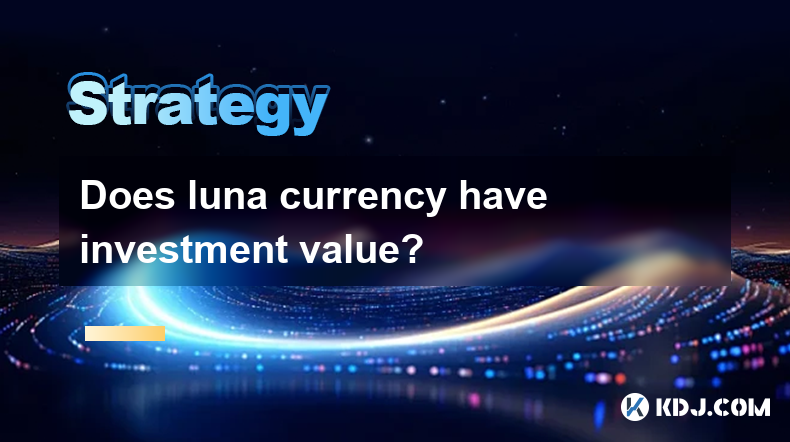
Key Points
- Understanding the Luna ecosystem and its technology
- Analyzing the tokenomics and market sentiment around Luna
- Exploring alternative investment opportunities within the cryptocurrency landscape
Luna's Ecosystem and Technology
Luna is the native token of the Terra blockchain, a proof-of-stake (PoS) protocol designed to power a variety of decentralized applications (dApps). The Luna token serves several key functions within the ecosystem:
- Transaction fees: Users pay Luna to process transactions on the Terra blockchain.
- Staking: Luna holders can stake their tokens to secure the network and earn rewards.
- Governance: Luna holders have voting rights to participate in the governance of the Terra blockchain.
The Terra ecosystem includes a range of dApps, including:
- Anchor Protocol: A decentralized savings platform offering stable yields on deposited assets.
- Mirror Protocol: A synthetic asset trading platform that allows users to create and trade tokens that track the price of real-world assets.
- Chai: A mobile payment platform that integrates with the Terra blockchain.
Tokenomics and Market Sentiment
Luna's tokenomics are designed to incentivize staking and reduce volatility. The total supply of Luna is 1 billion tokens, with a circulating supply of approximately 450 million tokens.
Most Luna tokens are currently staked by users, with an estimated staking rate of around 60%. Staking rewards are distributed daily and currently amount to approximately 10% per year.
The market sentiment around Luna has been generally positive in recent months. The token has seen significant price appreciation, driven by the growth of the Terra ecosystem and increased demand for staked assets.
Alternative Investment Opportunities
In addition to Luna, there are several other investment opportunities within the cryptocurrency landscape. Some of the most promising include:
- Ethereum (ETH): A programmable blockchain that supports a wide range of dApps.
- Binance Coin (BNB): The native token of the Binance exchange, which offers a variety of utilities and benefits.
- Solana (SOL): A high-performance blockchain that supports smart contracts and decentralized applications.
- Cardano (ADA): A proof-of-stake blockchain with a strong focus on research and development.
- Polkadot (DOT): A blockchain that connects multiple other blockchains and enables interoperability.
FAQs
1. Is Luna a good investment?
The investment value of Luna depends on several factors, including the growth of the Terra ecosystem, market demand for staked assets, and the overall sentiment of the cryptocurrency market. While Luna has seen significant price appreciation in recent months, investors should always conduct thorough research and consider their own risk tolerance before making any investment decisions.
2. What is the future of Luna?
The future of Luna is tied to the development of the Terra ecosystem. If the Terra ecosystem continues to grow and attract developers and users, Luna is likely to benefit. However, the cryptocurrency market is highly unpredictable, and it is difficult to predict the future price of any asset with certainty.
3. Are there any risks associated with investing in Luna?
As with any investment, there are risks associated with investing in Luna. These risks include the volatility of the cryptocurrency market, the possibility of technical issues with the Terra blockchain, and the regulatory landscape surrounding cryptocurrencies.
4. How can I invest in Luna?
Luna can be purchased on a variety of cryptocurrency exchanges, including Binance, Coinbase, and Kraken. Investors should always choose a reputable exchange with high security measures and a good track record of customer support.
5. How much money should I invest in Luna?
The amount of money you invest in Luna should depend on your individual circumstances, including your financial goals, risk tolerance, and investment horizon. It is generally recommended to diversify your investments and not put all of your eggs in one basket.
Disclaimer:info@kdj.com
The information provided is not trading advice. kdj.com does not assume any responsibility for any investments made based on the information provided in this article. Cryptocurrencies are highly volatile and it is highly recommended that you invest with caution after thorough research!
If you believe that the content used on this website infringes your copyright, please contact us immediately (info@kdj.com) and we will delete it promptly.
- 2025-W Uncirculated American Gold Eagle and Dr. Vera Rubin Quarter Mark New Products
- 2025-06-13 06:25:13
- Ruvi AI (RVU) Leverages Blockchain and Artificial Intelligence to Disrupt Marketing, Entertainment, and Finance
- 2025-06-13 07:05:12
- H100 Group AB Raises 101 Million SEK (Approximately $10.6 Million) to Bolster Bitcoin Reserves
- 2025-06-13 06:25:13
- Galaxy Digital CEO Mike Novogratz Says Bitcoin Will Replace Gold and Go to $1,000,000
- 2025-06-13 06:45:13
- Trust Wallet Token (TWT) Price Drops 5.7% as RWA Integration Plans Ignite Excitement
- 2025-06-13 06:45:13
- Ethereum (ETH) Is in the Second Phase of a Three-Stage Market Cycle
- 2025-06-13 07:25:13
Related knowledge
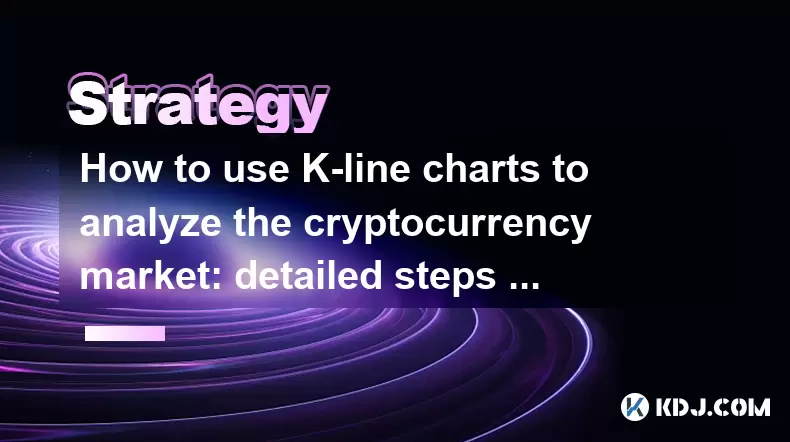
How to use K-line charts to analyze the cryptocurrency market: detailed steps and common misunderstandings
Jun 16,2025 at 01:42pm
Understanding the Basics of K-line Charts in Cryptocurrency TradingK-line charts, also known as candlestick charts, are one of the most widely used tools for analyzing price movements in financial markets, including cryptocurrencies. These charts provide a visual representation of price action over specific time intervals and help traders make informed ...

Cryptocurrency K-line chart technical analysis manual: Learn these methods to increase your chances of making a profit
Jun 11,2025 at 11:21pm
Understanding the Basics of K-line ChartsK-line charts, also known as candlestick charts, are one of the most widely used tools in cryptocurrency trading. Each K-line represents a specific time period and provides information about the open, high, low, and close prices during that interval. The body of the candle shows the relationship between the openi...

The Importance of K-line Chart Analysis in Cryptocurrency Trading: From Theory to Practical Cases
Jun 11,2025 at 04:56pm
Understanding the Basics of K-line ChartsK-line charts, also known as candlestick charts, are a visual representation of price movements over specific time intervals. Each K-line encapsulates four critical data points: the opening price, closing price, highest price, and lowest price within a given timeframe. These charts originated in Japan during the ...

Cryptocurrency K-line Chart Interpretation Guide: How Novices Can Quickly Master the Basics of Technical Analysis
Jun 10,2025 at 08:56pm
Understanding the Basics of K-line ChartsK-line charts, also known as candlestick charts, are one of the most widely used tools in cryptocurrency trading for analyzing price movements. Each K-line represents a specific time period and shows the opening, closing, high, and low prices during that interval. For novices, grasping how to read these elements ...
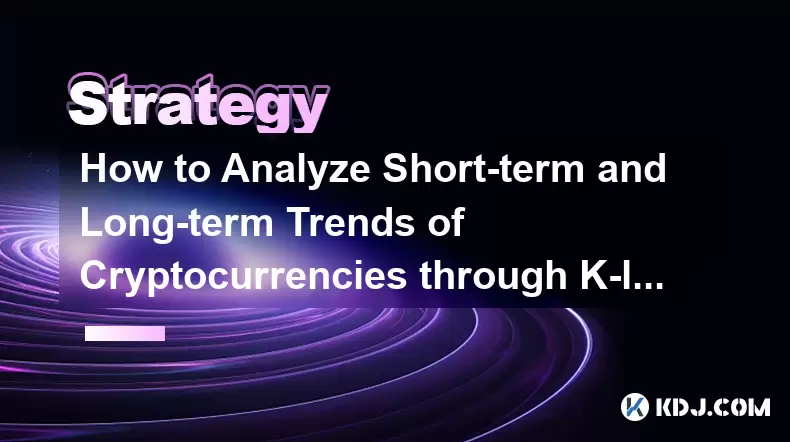
How to Analyze Short-term and Long-term Trends of Cryptocurrencies through K-line Charts: A Complete Guide
Jun 15,2025 at 12:49pm
Understanding the Basics of K-line ChartsK-line charts, also known as candlestick charts, are essential tools used in cryptocurrency trading to visualize price movements over time. Each candlestick represents a specific time interval and contains four key data points: open, high, low, and close. The body of the candle shows the range between the opening...
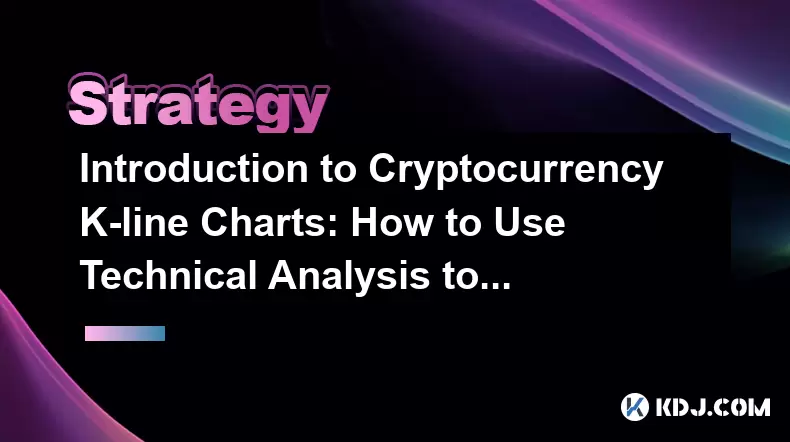
Introduction to Cryptocurrency K-line Charts: How to Use Technical Analysis to Optimize Trading Decisions
Jun 12,2025 at 03:56pm
Understanding the Basics of K-line ChartsK-line charts, also known as candlestick charts, are one of the most essential tools used in cryptocurrency trading. Originating from Japan, these charts visually represent price movements over specific time intervals. Each candlestick displays four key pieces of information: the opening price, closing price, hig...

How to use K-line charts to analyze the cryptocurrency market: detailed steps and common misunderstandings
Jun 16,2025 at 01:42pm
Understanding the Basics of K-line Charts in Cryptocurrency TradingK-line charts, also known as candlestick charts, are one of the most widely used tools for analyzing price movements in financial markets, including cryptocurrencies. These charts provide a visual representation of price action over specific time intervals and help traders make informed ...

Cryptocurrency K-line chart technical analysis manual: Learn these methods to increase your chances of making a profit
Jun 11,2025 at 11:21pm
Understanding the Basics of K-line ChartsK-line charts, also known as candlestick charts, are one of the most widely used tools in cryptocurrency trading. Each K-line represents a specific time period and provides information about the open, high, low, and close prices during that interval. The body of the candle shows the relationship between the openi...

The Importance of K-line Chart Analysis in Cryptocurrency Trading: From Theory to Practical Cases
Jun 11,2025 at 04:56pm
Understanding the Basics of K-line ChartsK-line charts, also known as candlestick charts, are a visual representation of price movements over specific time intervals. Each K-line encapsulates four critical data points: the opening price, closing price, highest price, and lowest price within a given timeframe. These charts originated in Japan during the ...

Cryptocurrency K-line Chart Interpretation Guide: How Novices Can Quickly Master the Basics of Technical Analysis
Jun 10,2025 at 08:56pm
Understanding the Basics of K-line ChartsK-line charts, also known as candlestick charts, are one of the most widely used tools in cryptocurrency trading for analyzing price movements. Each K-line represents a specific time period and shows the opening, closing, high, and low prices during that interval. For novices, grasping how to read these elements ...

How to Analyze Short-term and Long-term Trends of Cryptocurrencies through K-line Charts: A Complete Guide
Jun 15,2025 at 12:49pm
Understanding the Basics of K-line ChartsK-line charts, also known as candlestick charts, are essential tools used in cryptocurrency trading to visualize price movements over time. Each candlestick represents a specific time interval and contains four key data points: open, high, low, and close. The body of the candle shows the range between the opening...

Introduction to Cryptocurrency K-line Charts: How to Use Technical Analysis to Optimize Trading Decisions
Jun 12,2025 at 03:56pm
Understanding the Basics of K-line ChartsK-line charts, also known as candlestick charts, are one of the most essential tools used in cryptocurrency trading. Originating from Japan, these charts visually represent price movements over specific time intervals. Each candlestick displays four key pieces of information: the opening price, closing price, hig...
See all articles























